[ZX Spectrum, MC Lothlorien]
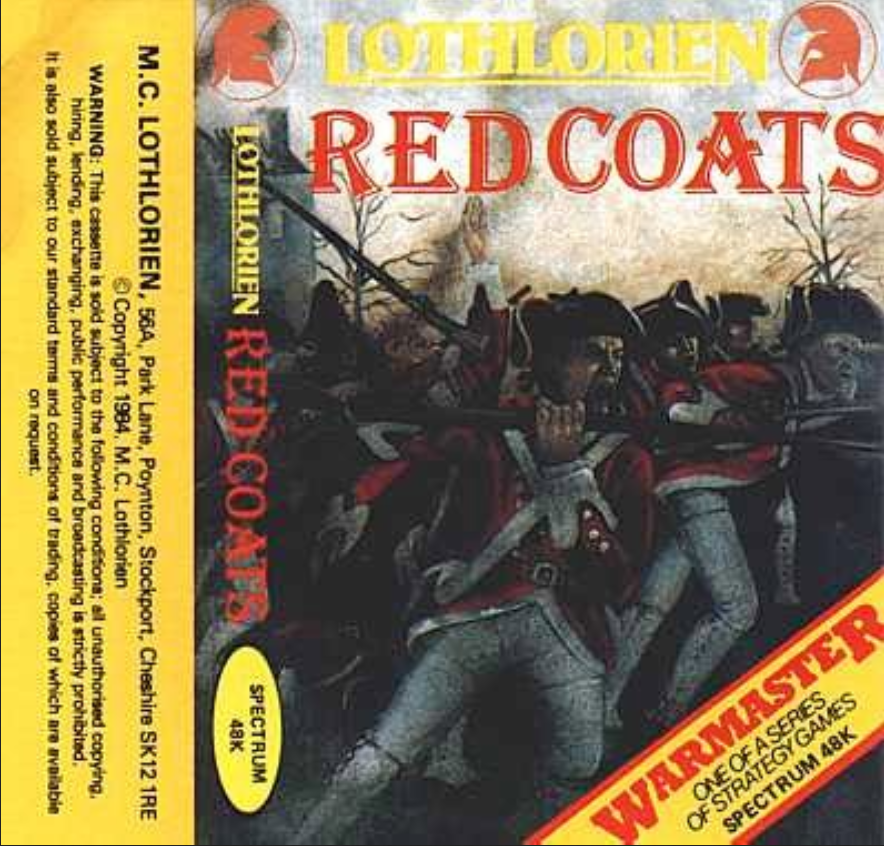
I can’t say I’ve been a big fan of MC Lothlorien’s wargames so far, but I have to respect the sheer volume of their output and their willingness to cover rare themes: the Peloponnesian War, the War of the Worlds and now with Redcoats the American Independence War.
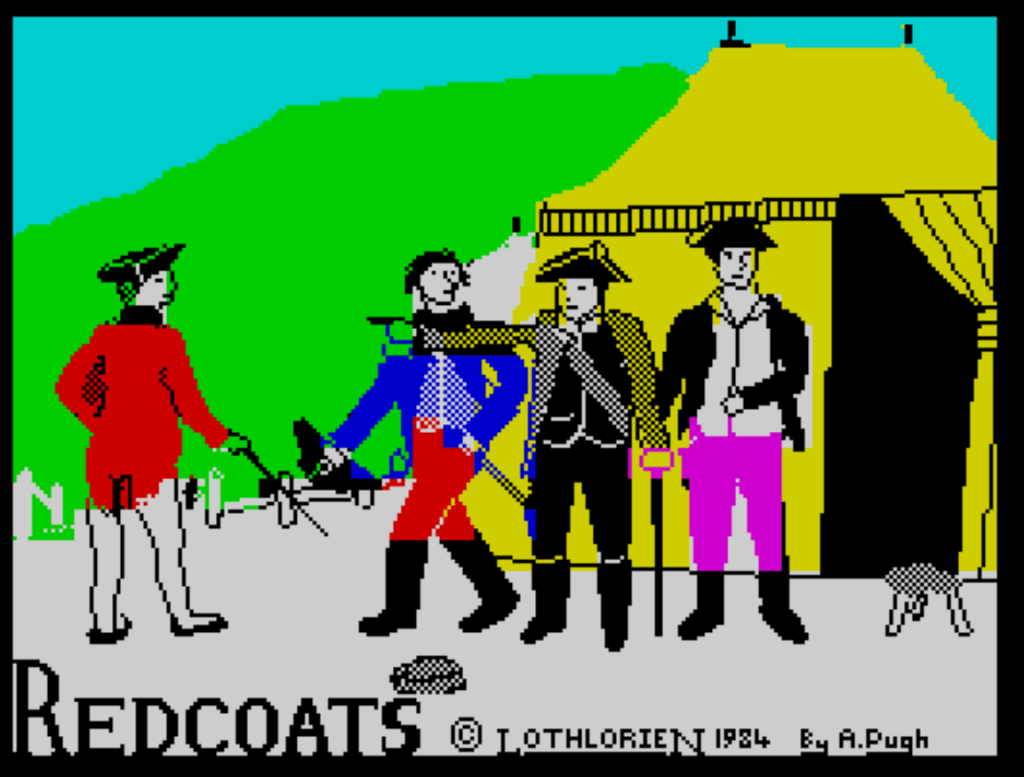
Redcoats features 5 battles from the American Revolution (Freeman’s Farm, Camden, Cowpens, Guilford Courthouse and Eutaw Springs), playable as both sides. For this AAR, I chose the South Carolina battle of Eutaw Springs (8 September 1781) in which General Nathanael Greene tried and failed to destroy the British in their camp, but managed to disengage with fewer losses than his opponents. I picked the British side and ramped the difficulty up to the maximum, because in my test I found out that the AI was terrible, so it needs all the help I can give it.
The battle opens with the British in the open field and the Americans in the only house on the battlefield. Historically, the British defence was anchored around the “Brick House” – and in the original BBC Micro it is indeed the British who defend the house, so whoever ported the game must have mixed up their notes.
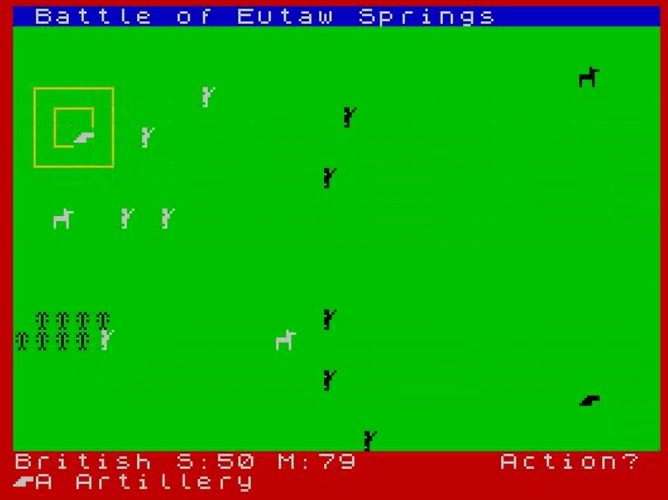
There are 4 types of units in the game:
- Guns have the longest range, but they take time to move as they need to be lumbered and then unlumbered and reloaded. They can shoot once every two turns,
- Infantry have a short range, but can fire every turn or in melee if needed,
- Cavalry can only attack in melee, but moves twice as fast as infantry,
- Finally, riflemen/sharpshooters (absent in this battle) have a medium range, somewhere between infantry and guns. They can only shoot once every two turns (like guns) but of course they don’t need lumbering/unlumbering. They can’t fight in mele either.
I play first, and immediately shoot at the American cavalry right in front of me, immediately wiping it out!
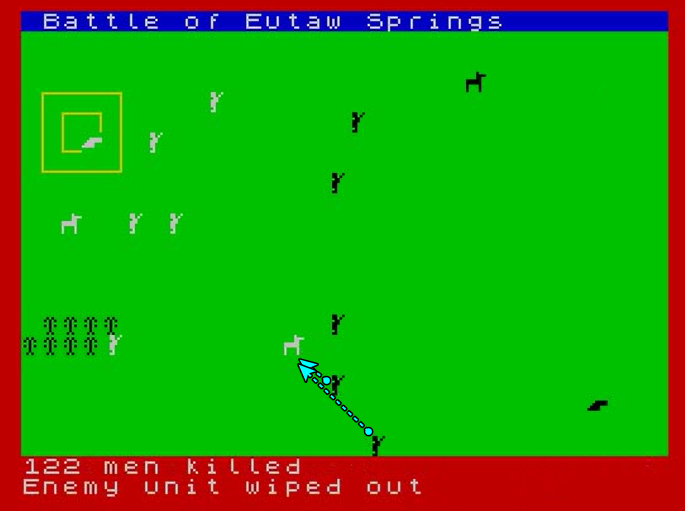
I pull back the rest of my infantry to form a line, while my cavalry and guns arrive. During their turn, the Americans mostly approach, but the enemy guns kill around 50 of my men.
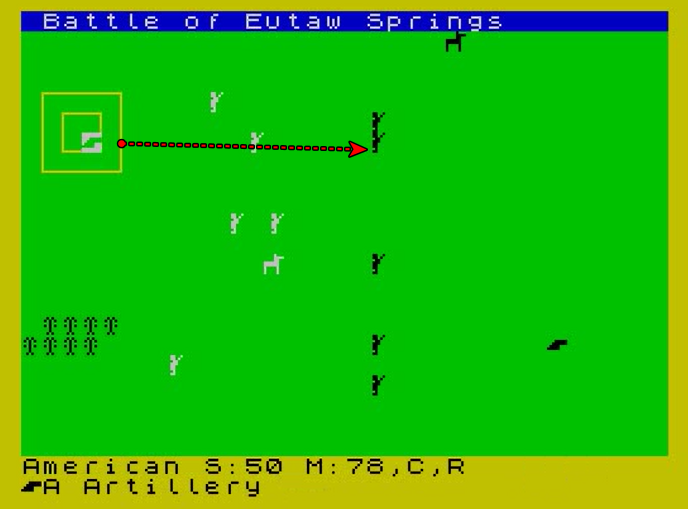
The following is decisive. At short range, I can eliminate an enemy unit in one or two shots, whereas the Americans almost always eliminate mine in one shot due to the difficulty level. The map clears rapidly:
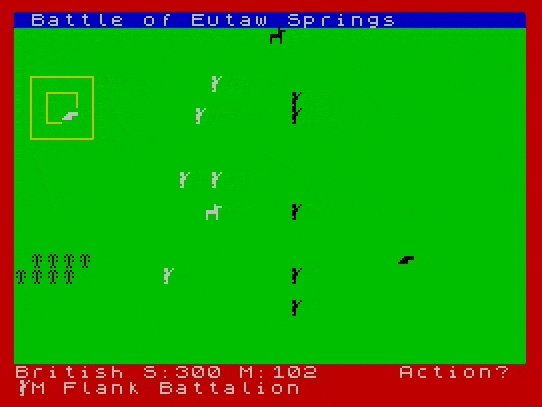
The next part of my plan was to charge the enemy guns with my cavalry while they reload, but I have tunnel vision and forgot that this is the next part of my plan, not the current part when there is still infantry to kill my horsemen:

This leaves three of my infantry against two of theirs. As units cannot move and shoot, I hold my position, wait for the enemy to approach and get a first shot. This allows me to eliminate the two remaining infantry units at the cost of two of mine.

This leaves the guns, which shoot at me every two turns. My tactic is to advance my infantry slightly in front of my guns to “receive” the attacks, with my guns slightly behind returning fire.

This takes a while: the enemy gun has 50 strength points, and I chip them down 3 at a time. When my infantry finally goes down, the battle is just a succession of canon attacks:

I eventually win this duel, winning the battle.
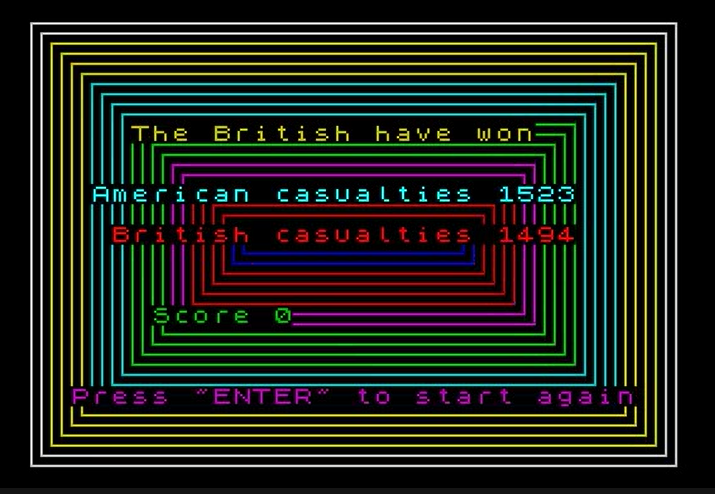
I am so privileged to have finally relived the battle of Eutaw Springs.
For the record, I replayed the battle at max difficulty with the Americans, and it also finished with a gun duel that I won, so there’s a pattern here.
Ratings & Review
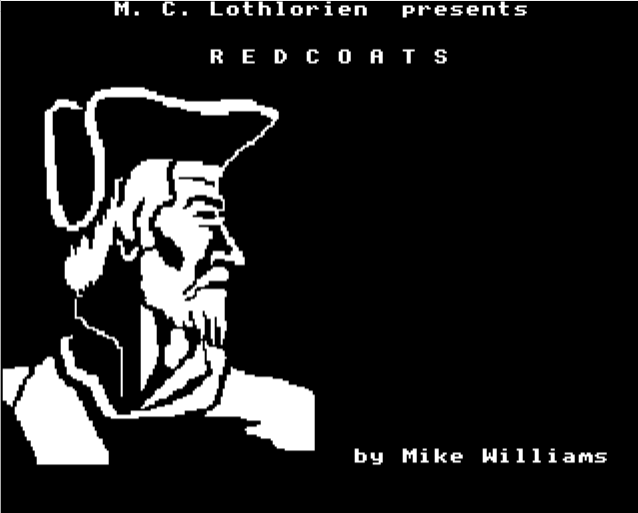
Redcoats by Mike Williams, published by MC Lothlorien, UK
First release: Around November 1984 on BBC Micro
Genre: Battlefield Tactics
Average duration of a battle: 10 minutes at high emulator speed
Total time played: Around 1.5 hours
Complexity: Low (1/5)
Final Rating: Totally obsolete
Context – Redcoats is another title of MC Lothlorien’s collection of terrible-to-mediocre wargames, in this case clearly inspired by Andy Pugh’s successful Johnny Reb. Redcoats is credited to Mike Williams, about whom I know nothing, and then ported on Spectrum. The Spectrum port bears Pugh’s signature, though his recollection of the events is spotty. Pugh has a recollection of fiddling with a BBC Micro and having a printout of the code, but does not remember coding the port itself. He explained in an email “I didn’t write that game. By that point I was studying too hard for my A-levels to spend much time programming. However, I did have a bit of a sideline making loading screens for Lothlorien. My name on the loading screen was only meant to be my “signature” on the graphics. Unfortunately, it was too big, and placed in such a way as to make it look like I wrote the game. It’s been a source of decades of embarrassment.” My theory is that, while he can’t remember it, he either did the porting or possibly the scenario data input. He remembers the price for the decades of embarrassment to be £45, which seems low for a porting job indeed – but again I asked him to remember events that happened when he was around 16, more than 40 years ago. For the record, he remembers receiving £375 for the entirety of Johnny Reb.
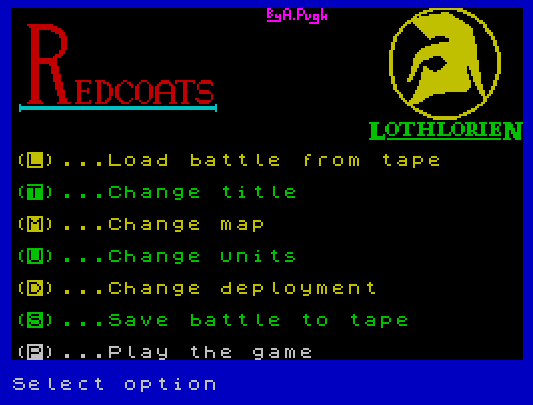
Despite flying under the radar, Redcoats must have had at least some success, given it was ported on Amstrad CPC, and received a Spanish localization.

Traits – I have a few positive things to say about Redcoats: it’s a rarely covered topic, it’s easy and fast to play and it shipped with a complete editor (map, units, scenario). Voilà, I am done with the positive things.
The game tries hard to be realistic, with a morale system and individual stats and names (eg “64th Foot“) for units. The Spectrum’s large screen does a disservice to the game as units start so far away they can’t support each other, with the BBC Micro original version feeling more realistic from this point of view.
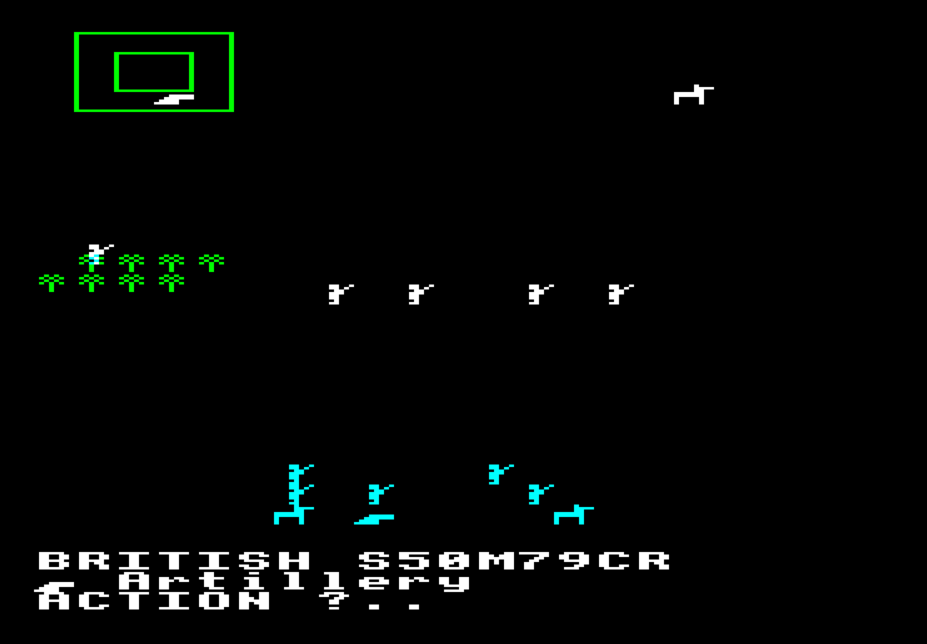
That’s the main difference between the two versions. In the same scenario, same difficulty, I won by pulling back my troops just like on Spectrum…
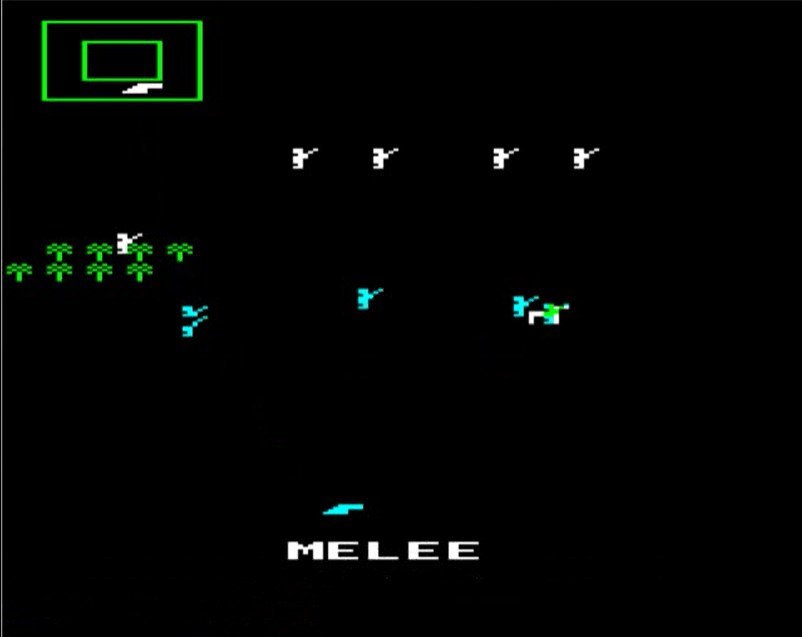
…after which I marched on the enemy guns while the remaining American infantry remained still and got pummeled by my guns:
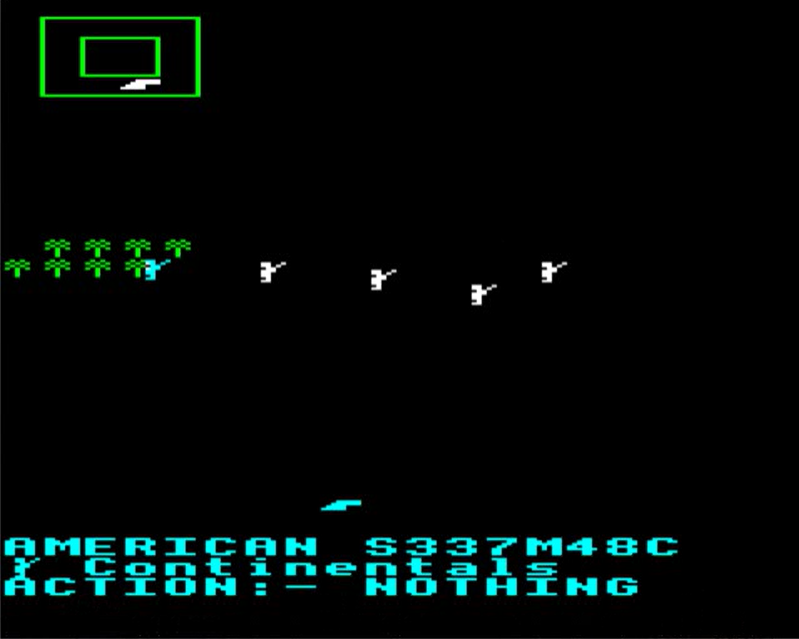
Redcoats suffers for a combination of design flaws that together ruin the game:
- The only objective is to destroy all the enemy units,
- You can’t move and shoot, so whoever moves gets shot first,
- Units die quickly at short range, so whoever gets shot dies,
- The AI does the worst thing you can imagine, either advancing its units one after the other, or staying put while under fire.

Did I make interesting decisions? No. Whatever mistakes I made, they were not exploited by the AI.
Final rating: Totally obsolete – its inferior to Johnny Reb but at least with a typical length of fewer than 10 minutes the game is quick to play.
Ranking at the time of review: 108/162.
Closely related: friend of the blog WhatHoSnorkers covered the five battles of Redcoats on YouTube/Twitch. Unlike me, he tries to play somewhat historically (charging bravely despite overwhelming odds and all that), though it ends up with long-range gun attacks all the same!
Loosely related, after an email exchange with Andy Pugh I updated my article on Johnny Reb, adding the content of Pugh’s email at the bottom of the article – I think it is worth a read.